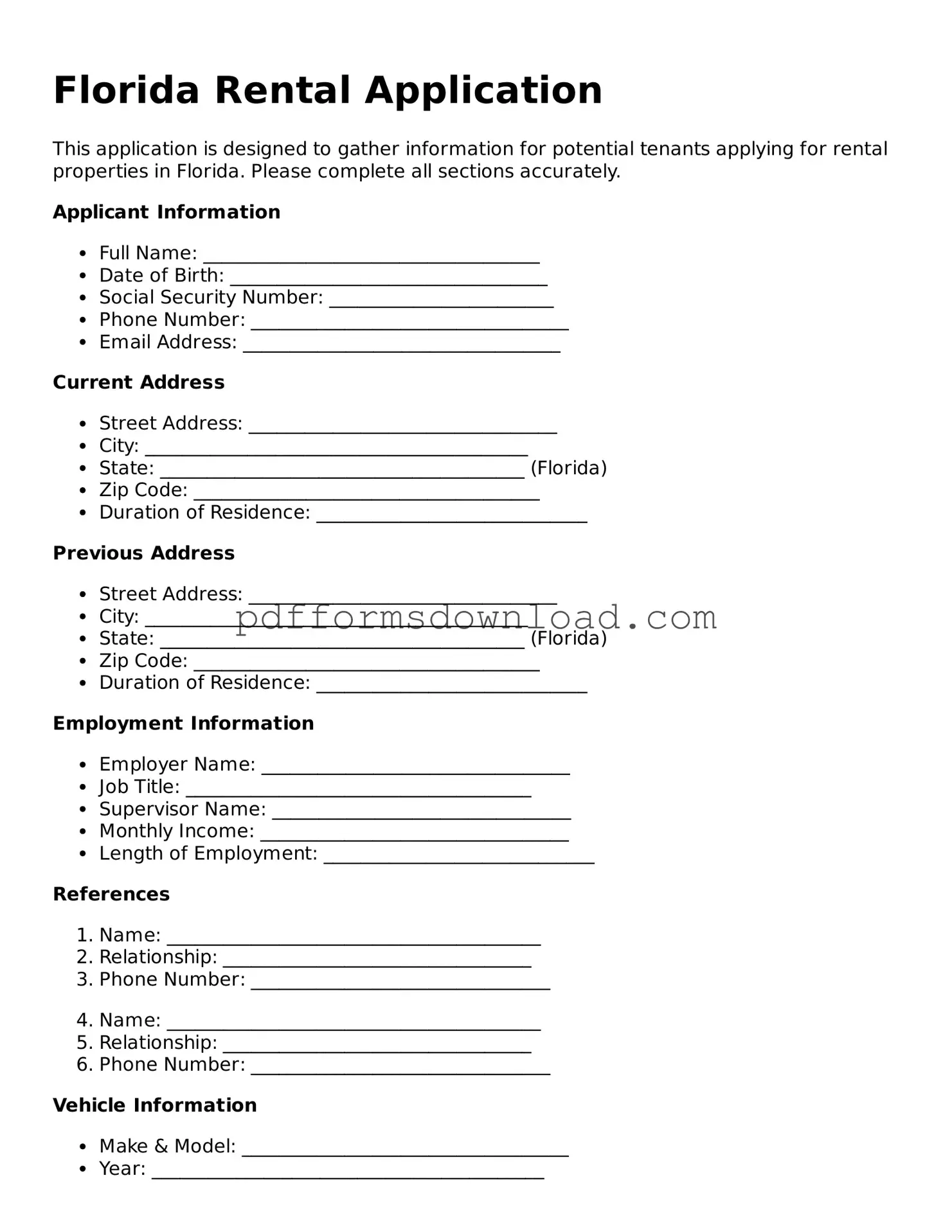What is a Florida Rental Application form?
The Florida Rental Application form is a document used by landlords and property managers to collect essential information from potential tenants. This form typically includes sections for personal details, rental history, employment information, and references. By completing this application, prospective tenants provide landlords with a snapshot of their background, helping landlords make informed decisions about who to rent their property to.
What information is typically required on the application?
A standard Florida Rental Application usually requires the applicant's full name, contact information, Social Security number, and date of birth. Additionally, it often asks for employment details, including the name of the employer, job title, and income. Rental history, such as previous addresses and landlord contact information, is also a common requirement. Some applications may request personal references or information about pets, if applicable.
How does a landlord use the information from the application?
Landlords use the information provided in the rental application to evaluate the suitability of a potential tenant. They may conduct background checks, verify employment and income, and check rental history to assess reliability. This process helps landlords ensure that they choose tenants who are likely to pay rent on time and take good care of the property.
Is there a fee associated with submitting a rental application?
Many landlords and property management companies charge a fee for processing rental applications. This fee typically covers the cost of background checks and administrative expenses. The amount can vary widely, so it’s essential to ask about any fees upfront. Applicants should also inquire whether this fee is refundable or if it will be applied toward the first month’s rent upon approval.
